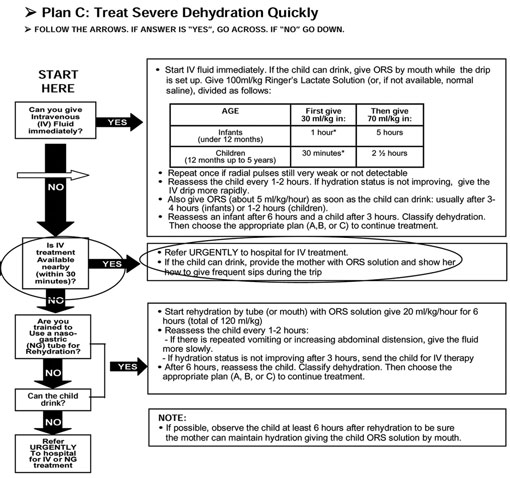Severe dehydration
Any child with dehydration needs fluid replacement. A child classified with severe dehydration needs fluids quickly. ‘Plan C: Treat Severe Dehydration Quickly’ describes how to give fluids to severely dehydrated children and is set out below.
Note that giving intravenous (IV) fluid therapy through a sterile tube and cannula into a small child’s vein requires special training in addition to any training you may have received on giving IV fluids to adults.
Plan C: Steps for treating severe dehydration

Activity: Steps for treating severe dehydration
Look at the information in Plan C and then make notes in your Study Diary in answer to the following questions.
- When should you refer a child urgently to hospital for treatment?
- If there is no IV line available, or you have not been trained to insert one, what options could you follow?
- How often would you assess the child after rehydration? Give reasons for your answer.
You can see that the guidance in Plan C sets out a series of questions that take you through a range of options depending on your training and what resources are available in your health facility, such as IV fluids or naso-gastric (NG) tube. The essential points are these:
- A child with severe dehydration needs to be treated as quickly as possible.
- If you are not able to rehydrate the child using an IV line, naso-gastric tube, or because the child is unable to take fluids by mouth, you must refer the child urgently to a hospital.
- If there is an IV facility which the mother can reach in less than 30 minutes you should refer the child urgently, giving sips of ORS during the trip.
- If the health facility is more than 30 minutes away you should still refer if you are not able to rehydrate the child using a naso-gastric tube or orally.
- If you are able to rehydrate the child but his hydration status does not improve after three hours, you should refer the child.